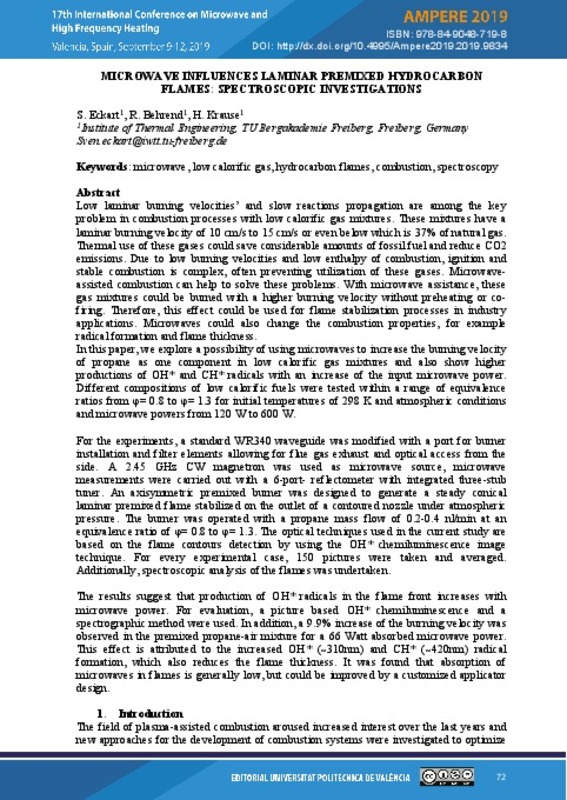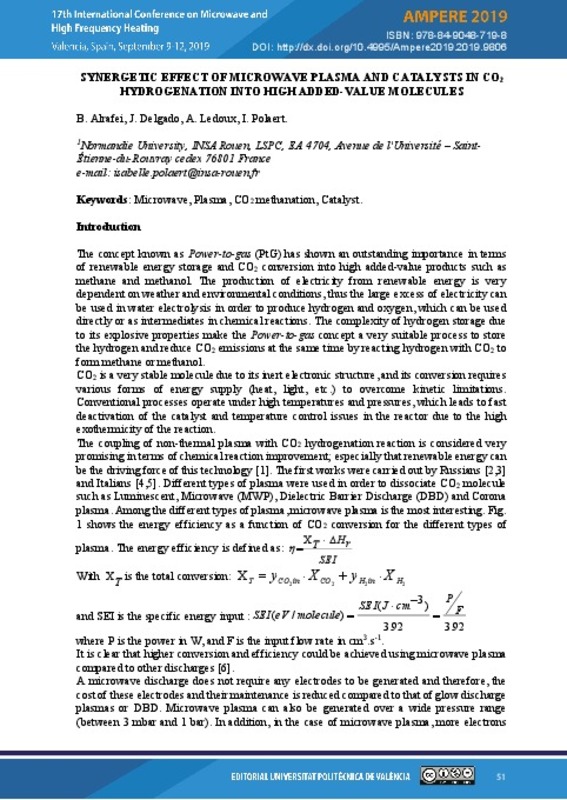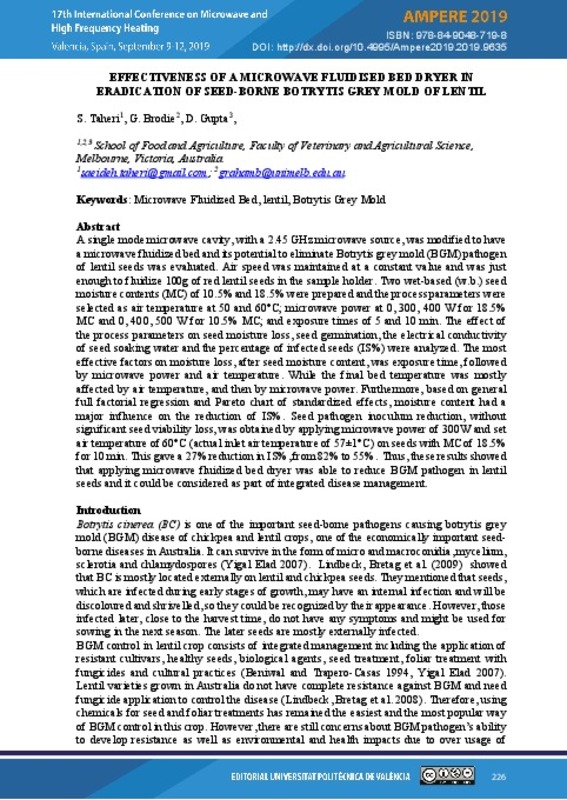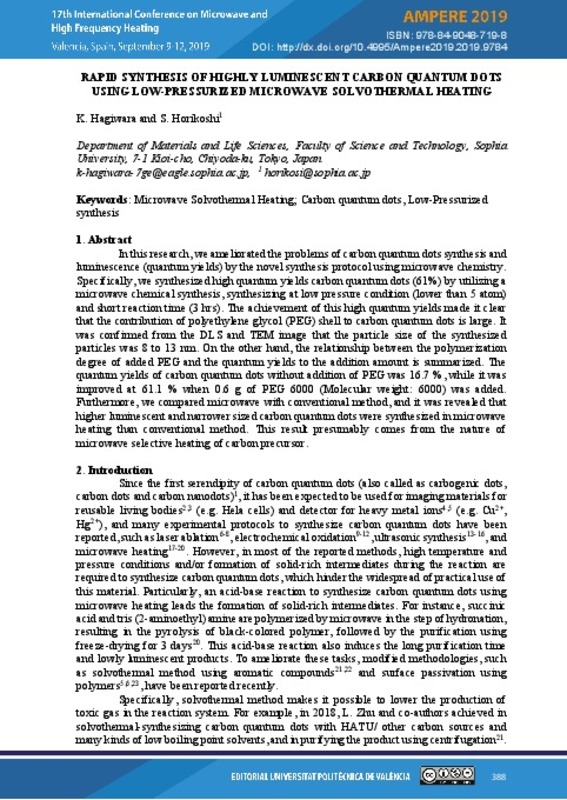JavaScript is disabled for your browser. Some features of this site may not work without it.
Buscar en RiuNet
Listar
Mi cuenta
Estadísticas
Ayuda RiuNet
Admin. UPV
Microwave influences laminar premixed hydrocarbon flames: Spectroscopic investigations
Mostrar el registro completo del ítem
Eckart, S.; Behrend, R.; Krause, H. (2019). Microwave influences laminar premixed hydrocarbon flames: Spectroscopic investigations. En AMPERE 2019. 17th International Conference on Microwave and High Frequency Heating. Editorial Universitat Politècnica de València. 72-80. https://doi.org/10.4995/AMPERE2019.2019.9834
Por favor, use este identificador para citar o enlazar este ítem: http://hdl.handle.net/10251/130658
Ficheros en el ítem
Metadatos del ítem
| Título: | Microwave influences laminar premixed hydrocarbon flames: Spectroscopic investigations | |
| Autor: | Eckart, Sven Behrend, Ralph Krause, Hartmut | |
| Fecha difusión: |
|
|
| Resumen: |
[EN] Low laminar burning velocity’s and slow reactions propagation are among a key problem in combustion processes with low calorific gas mixtures. The mixtures have a laminar burning velocity of 10 cm/s to 15 cm/s or even ...[+]
|
|
| Palabras clave: |
|
|
| Derechos de uso: | Reconocimiento - No comercial - Sin obra derivada (by-nc-nd) | |
| ISBN: |
|
|
| Fuente: |
|
|
| DOI: |
|
|
| Editorial: |
|
|
| Versión del editor: | http://ocs.editorial.upv.es/index.php/AMPERE2019/AMPERE2019/paper/view/9834 | |
| Título del congreso: |
|
|
| Lugar del congreso: |
|
|
| Fecha congreso: |
|
|
| Código del Proyecto: |
|
|
| Agradecimientos: |
|
|
| Tipo: |
|
recommendations
Este ítem aparece en la(s) siguiente(s) colección(ones)
-
Ampere 2019 [66]











